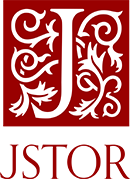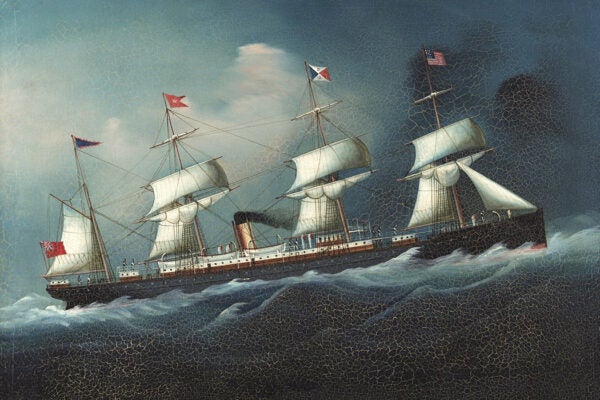In 1947, New York-based publisher John Day Company set out plans for a novel that promised to be the first of its kind: “a ‘Chinese-American’ novel,” entitled Chinatown Family, “that dealt exclusively with the ‘experiences of the Chinese in America,’” as the commissioning brief put it. John Day editor-in-chief Richard Walsh and the celebrated writer Pearl S. Buck already had an author in mind for the book: twelve years earlier, Walsh and Buck had helped Chinese writer Lin Yutang to move to the United States, after Shanghai got too risky for the anticommunist liberal.
“One small obstacle, however, stood in the way of this project,” Richard Jean So points out: “Lin knew virtually nothing about Chinese Americans or the Chinese American experience.”
Living in exile in the United States, Lin had quickly made a name for himself, with three bestselling novels under his belt. But, “[d]espite his self-identification as a Chinese immigrant, Lin operated in a rarefied world of the cultural and social elite,” writes So. As a result, the process of writing Chinatown Family—which So describes as “one of the very first efforts by a major publishing house to publish and market a novel as a work of Asian American fiction in the mainstream press”—turned into a “complex collaborative venture.”
Examining the mark Walsh left on Lin’s book, So calls for more attention to be given to the ways in which literary texts are produced by editorial intervention and other “mundane” forces.
During the 1930s, the John Day Company found novels about China to be immensely profitable—but interest in such books had fallen since World War II, and the publisher urgently needed to make money. Walsh believed “that a ‘new kind of novel,’ a story about the Chinese in New York, would serve to generate a new readerly public…interested in ‘the immigrant experience,’” reports So, whose dive into the archives excavated a series of office memos written by Walsh in 1948. And, because American readers expected and prized authenticity in such accounts, the John Day marketing team wanted Lin to “report the reality of Chinese America” like a journalist.
Chinatown Family initially faced a demanding editor, as seen in Walsh’s response to early drafts. The novel follows the ups and downs of the Fong family, who live in New York’s Chinatown in the 1930s. When Walsh received the first two chapters from Lin in the winter of 1948, he was moved by its tender depictions of the Fongs having dinner around a table together—moved to scolding, that is.
More to Explore
Writing a “Different Type of Chinese” into Being
Well aware of the historical restrictions on Chinese immigration, Walsh fired off a letter stating, “You are going to have to find one of the ways by which they could get around the law…. [Y]ou would have to explain how a Chinese woman and two children got all the way to New York without being detected.”
Walsh continued his letter with a demand for the novel to provide an explanation, which he wrote “has to be done.” In fact, that very phrase makes it into the final version of Lin’s first chapter, which ends: “No it was not easy… But the thing was done.” One can almost hear the author’s exasperated sigh.
“That said, it would be misleading to envision Lin, one of the most significant Chinese writers of the twentieth century, as John Day’s puppet,” So cautions, observing that Lin’s voice seems to re-emerge more strongly in the second half of Chinatown Family. He singles out a key scene where the young American-born character Tom Fong encounters the Declaration of Independence in his ninth-grade classroom and is asked by his teacher to discuss it.
“The class listened closely. No student had thought the Declaration could be put so plainly,” Lin wrote. “The teacher’s eyes were bright and his face was happy.”
The appearance of the Declaration of Independence in Chinatown Family “is far from random or incidental,” writes So, as he highlights Lin’s translation of the Declaration into Chinese in 1934. Of course, America’s founding document had appeared in Chinese multiple times before. But what stands out is Lin’s choice to translate not the “highly archaic and difficult language” of the original Declaration, but H. L. Mencken’s “slang” version, which begins,
When things get so balled up that the people of a country have got to cut loose…then they ought to let everybody know why they done it.
Not only did Lin opt to render Mencken’s colloquial language into a non-standard Northern Beijing dialect, he also used terms such as 皇上 (imperial sovereign), which So notes “invokes a specifically Chinese notion of sovereignty” that Chinese republicans saw as “in need of social reform.” Lin’s embrace of such political ideas had contributed to the necessity of his exile from China.
Weekly Newsletter
Yet, by bringing this literary history into Chinatown Family, So argues that he managed to have the last word over his editors. Tom is presented not just as “a model of US citizenship” who is able to interpret the Declaration of Independence for his peers, but also “the ideal speculative outcome of Lin’s failed project of Chinese liberalism in Shanghai, the dream of a ‘Republican Chinaman,’” So argues.
“Walsh’s editorial grip, felt so keenly in the early stages of the text’s production, slowly gives way to a gathering sense of literary autonomy, culminating with the emergence of a fully-realized Asian American literary voice.”
Support JSTOR Daily! Join our membership program on Patreon today.








